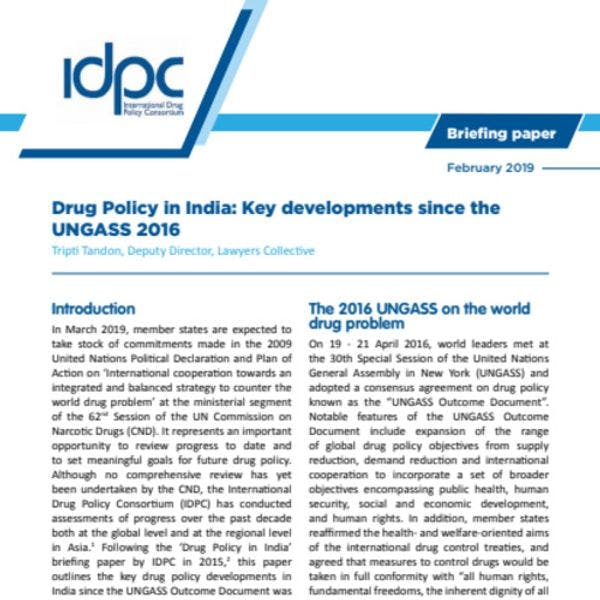La política de drogas en la India: principales novedades desde el UNGASS de 2016
El IDPC repasa las principales novedades en materia de política de drogas que se han producido en la India desde que se adoptó el documento final del UNGASS en 2016, y pone de relieve las preocupaciones que plantean con respecto a la salud y los derechos humanos tanto las políticas de drogas como las drogas en sí. Más información, en inglés, está disponible abajo.
In March 2019, member states are expected to take stock of commitments made in the 2009 United Nations Political Declaration and Plan of Action on ‘International cooperation towards an integrated and balanced strategy to counter the world drug problem’ at the ministerial segment of the 62nd Session of the UN Commission on Narcotic Drugs (CND). It represents an important opportunity to review progress to date and to set meaningful goals for future drug policy.
Although no comprehensive review has yet been undertaken by the CND, IDPC has conducted assessments of progress over the past decade both at the global level and at the regional level in Asia.
Following the ‘Drug Policy in India’ briefing paper by IDPC in 2015, this paper outlines the key drug policy developments in India since the UNGASS Outcome Document was adopted in 2016, which highlights health and human rights concerns in relation to both drugs and drug policies.
These concerns include the themes of availability and access to controlled medicines, evidence-based treatment for drug dependence, measures to minimise “the adverse health and social consequences” of drug use including overdose deaths and transmission of HIV, viral hepatitis and other blood-borne diseases, interventions to address the specific needs of children and youth, and proportionate responses in the criminal justice system.
Descargas
Temas
Regiones
Perfiles relacionados
- International Drug Policy Consortium (IDPC)
